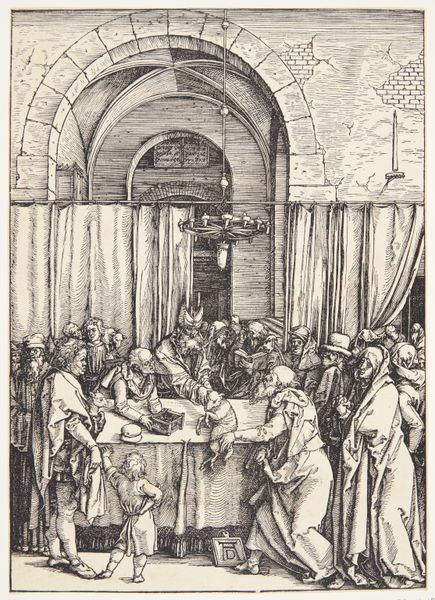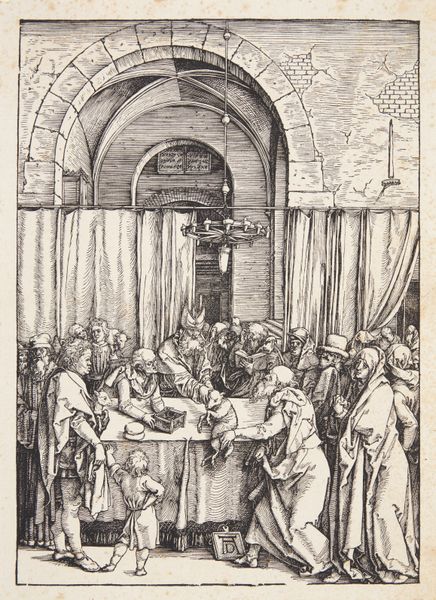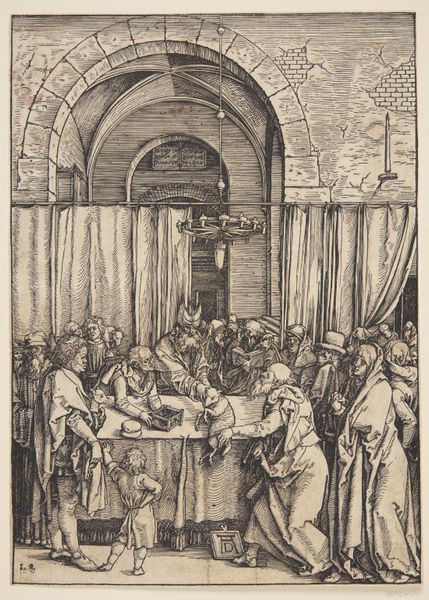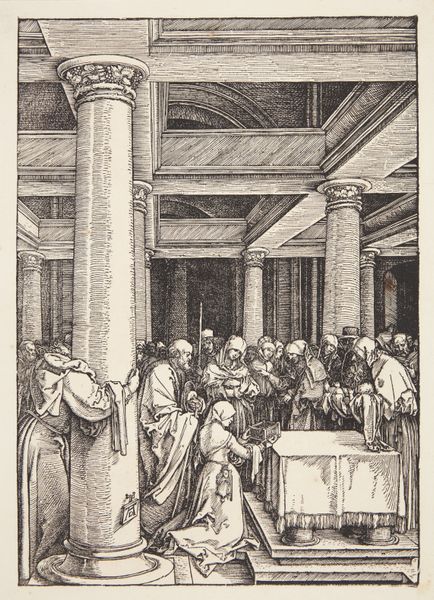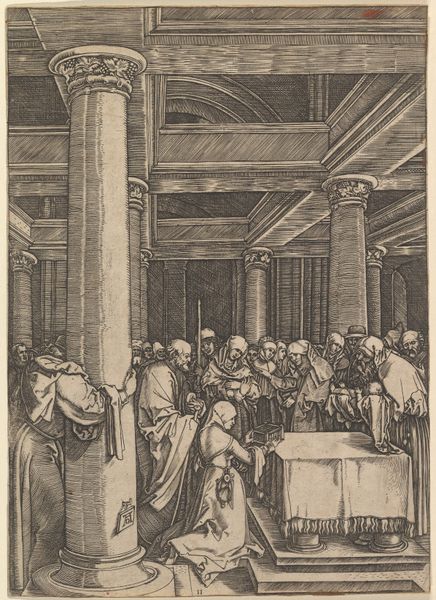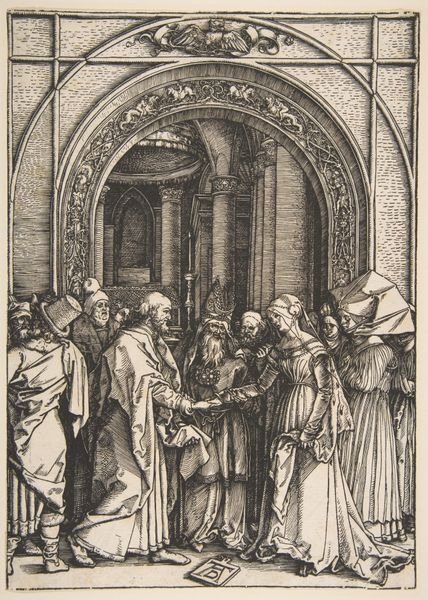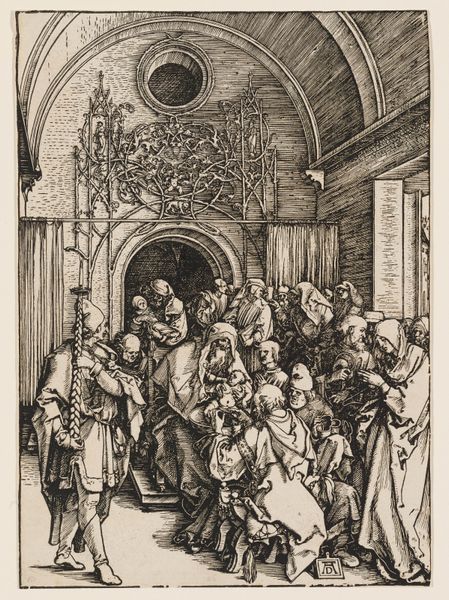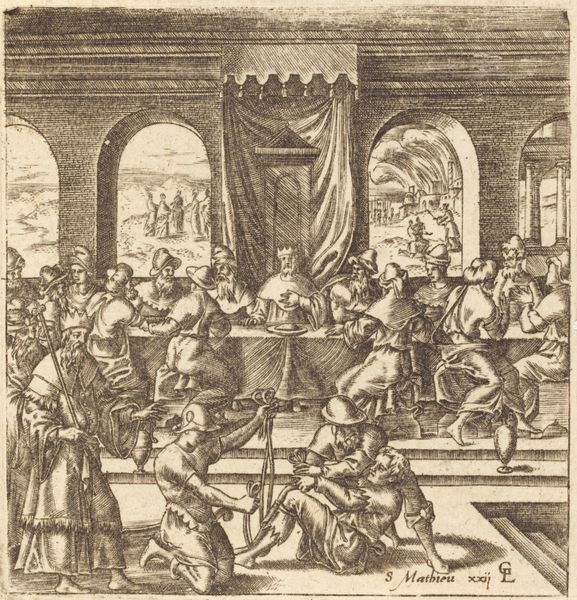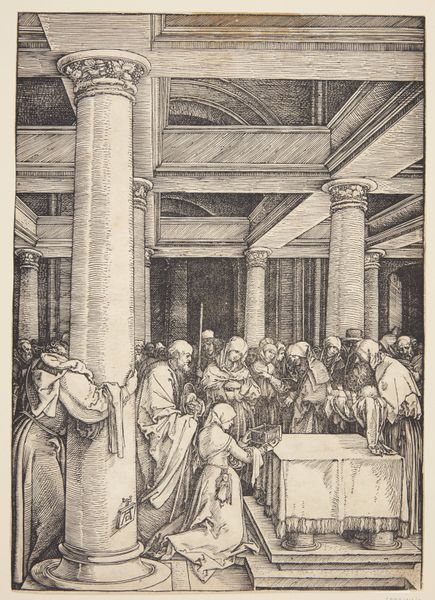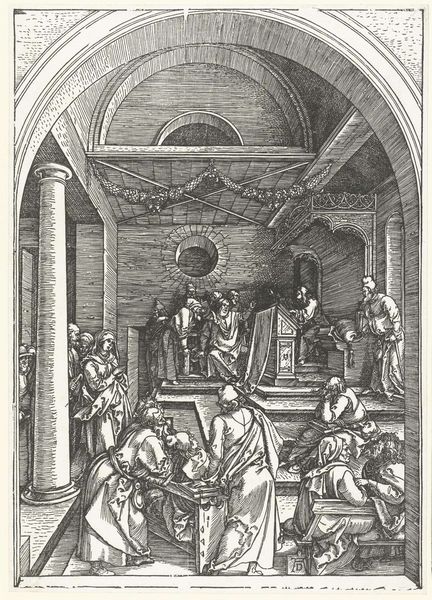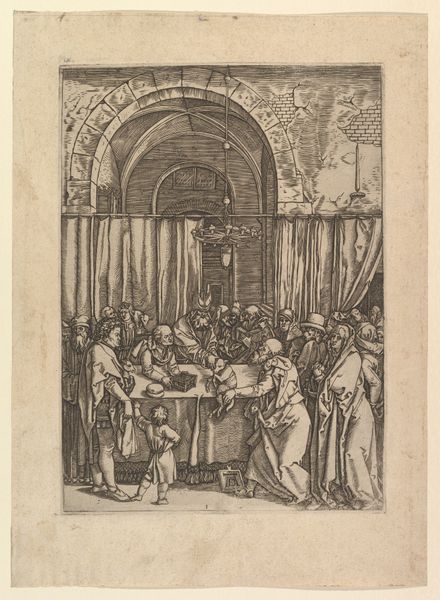
Dimensions: height 297 mm, width 213 mm
Copyright: Rijks Museum: Open Domain
Editor: Here we have Albrecht Durer’s "The Rejection of Joachim's Sacrifice," made between 1502 and 1506. It's an ink woodcut, full of intricate lines. The composition is dense, with lots of figures. What stands out to me is the emphasis on texture, created by the sheer labor of the engraving. What do you make of it? Curator: For me, the materiality speaks volumes about Durer's aims and the socio-economic context in which he worked. The medium of woodcut was not traditionally considered high art, right? Durer, through his sheer skill and the commercial distribution of prints, democratized art production and consumption. Think about the guilds, the workshops involved… the whole process is laid bare through the texture you pointed out. It’s labor made visible. Editor: So, you're saying the very choice of woodcut, which seems like a material constraint, becomes a commentary in itself? Instead of opulent displays of wealth, this brings the focus back to the craft and distribution. Curator: Precisely. And consider the scene itself - a rejection. What societal structures are being challenged here through this image of material exchange? What does it tell us about labor in that historical moment? Think about how the print medium facilitates the spread of these critical perspectives. Editor: It's fascinating to think about how the act of making the art – the labor and materials involved – connect so directly to the story being told within the artwork itself. This piece prompts a real question about the intended audience, then. I hadn't thought about that. Curator: It certainly provides a richer perspective beyond just the biblical narrative, doesn’t it? By acknowledging the production methods and broader market, the message gains additional significance and makes the work all the more powerful, especially considering the cultural relevance of the means of reproduction at the time.
Comments
No comments
Be the first to comment and join the conversation on the ultimate creative platform.
